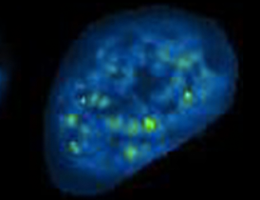Lighting up liraglutide

Ludwig Maximilian University researchers have incorporated a light-sensitive switch into liraglutide, a drug that is used to treat diabetes. In the long term, the new photoresponsive variant could help to alleviate the side-effects associated with the drug.
Type 2 diabetes (also known as maturity-onset diabetes) results from a gradual loss of tissue sensitivity to insulin, the hormone that controls the uptake and utilization of glucose in the body. One class of drugs that can be used to counteract insulin resistance are the so-called incretin mimetics. Research teams led by LMU's Dirk Trauner, Professor of Chemical Biology and Genetics, and Anja Hoffmann-Röder, Professor of Organic Chemistry, have now equipped an incretin mimetic called liraglutide with a photosensitive chemical switch, which makes it possible to control the drug's action by means of light. The results of the new study, to which Dr. David Hodson of Imperial College London also contributed, have just appeared in the journal Angewandte Chemie.
Incretins are peptide hormones produced by the cells of the gastrointestinal tract, which have two major effects – they regulate appetite and stimulate the secretion of insulin by the beta-cells of the pancreas in response to the intake of food. As their name suggests, incretin mimetics such as liraglutide are drugs that mimic the effects of incretins, and are used in the treatment of patients who suffer from Type 2 diabetes. Unfortunately, these agents also have side-effects, and can give rise to inflammation of the pancreas, gastrointestinal complications and nausea. "This is why we chose to synthesize a novel form of liraglutide that contains a so-called azobenzene switch which responds to light," says Tom Podewin, who is joint first author of the new study, together with his colleague Dr. Johannes Broichhagen. "The photoresponsive variant, which we call LirAzo, stimulates secretion of insulin only when exposed to light, which in principle makes it possible to restrict its action to specific tissues, which should in turn help reduce the incidence of side-effects," Broichhagen adds.
Conformation-dependent signaling
Liraglutide, like LirAzo, is a synthetic analog of the natural incretin GLP-1, and both drugs recognize and bind to the GLP-1 receptor on the surface of pancreatic beta-cells. However, LirAzo's ability to interact with GLP-1R can be modulated by light, which alters its three-dimensional structure in specific ways. This modified form of liraglutide contains a characteristic chemical double bond, which can adopt either a bent (the cis form) or an extended (the trans form) configuration – depending on the wavelength of the light to which it is exposed. Surprisingly, the researchers discovered that both conformations of LirAzo are biologically active – but each activates a different signaling pathway in the cells to which it binds. LirAzo adopts the trans form in the dark or when irradiated with blue light, and this "isomer" activates a pathway that protects cells from programmed cell death. Under the influence of ultraviolet light, LirAzo switches into the cis form, and this molecular species boosts the secretion of insulin. "The latter effect is, of course, the physiologically more important one for the regulation of blood glucose, as the GLP-1 receptor is clearly activated much more effectively by the cis form," says Broichhagen.
The team now intends to characterize the pharmacological properties of LirAzo in detail in vivo, as they are confident that it has potential as a therapeutic agent. It turns out that the cis-form of LirAzo is quite stable, which suggests that one could perhaps administer the compound after it had been irradiated with UV light. In the longer term, it may be feasible to develop an analogous switch that reacts to visible light. "But that remains to be seen," Trauner cautions, "and we expect that it will take at least a decade before such a drug is ready for clinical use."
More information: Johannes Broichhagen et al. Optical Control of Insulin Secretion Using an Incretin Switch, Angewandte Chemie International Edition (2015). DOI: 10.1002/anie.201506384
Journal information: Angewandte Chemie , Angewandte Chemie International Edition
Provided by Ludwig Maximilian University of Munich


















